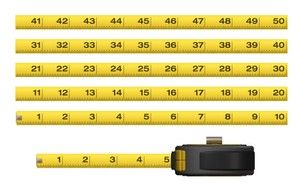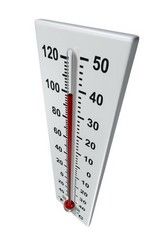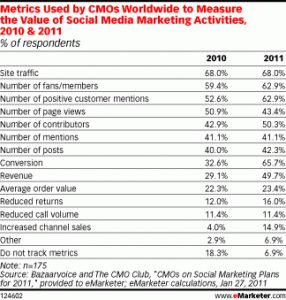Pr Measurement Formula Fails?
One of our clients, whom I respect enormously, wanted to run this PR measurement formula by you all.
“Say the client spends $100,000 on PR, in one year. For the sake of argument, let’s say PR is the biggest (or only) marketing vehicle. In that one year time period, the client gets 1M website impressions. Could you not divide 1M impressions by $100K and claim PR is driving leads to the website at a rate of 10–cents per impression?”

I am such a hopeless case when it comes to math. The “strategic part” of my brain shuts down and runs scurrying behind the elementary school–aged part of my psyche … which in turn quakes as if it’s been asked to solve a Physics problem in front of the classroom. Yea, it’s that bad.
So I turned to Twitter and asked my friends there for their gut reaction.
Gotta love Twitter. One of the first responders was Chuck Hemann, VP of Digital Strategy & Analytics for Ogilvy 360DI and author of the upcoming Social Media Metrics for Dummies. I think he’s qualified. Chuck sagely replied, “That’s a feasible theory, if impressions were a measure of anything worthwhile. What if, of those 1.2m impressions, only .2m were target?”
Jonathan Gardner, director of communications at Vibrant Media, also weighed in: “I want conversions!”
Corianda Dimes told me to check out the Barecelona Declaration of Measurement Principles instead. I’ve heard a bit about this approach but no one is clamoring for it nor excitedly pointing to it as our industry’s holy grail, at least not that I can tell.

Edelman’s Dave Fleet suggested “Media Relations Rating Points” as an alternate approach. According to the website, you can “Evaluate your media coverage (i.e. your clips, airings) for tone and criteria. Enter an audience reach number using the media outlet database provided by MRPdata.com. The MRP system will then automatically calculate your MRP score and your Cost-Per-Contact.” (Sounds interesting … Anyone tried this out? Care to report back to the class, with a sample report?)
Ultimately, pretty much all the Twitterati who responded barfed on the client’s “measurement proposal,” yet the varying REASONS for rejecting it spoke to the problem. As I tweeted at the time: “PR flails re: measurement — thus clients make #$% up. What answer works for nearly EVERY client?”
It remains an industry conundrum. “Pretty charts” is not the right answer. Can PR even drive the answer? Or must CMO’s decide once and for all, “Thou shalt measure your PR results like so … ?”

Seems to me that there is no lack of enthusiasm for measurement; if anything, everyone is measuring everything, there is just no agreement on which metrics are meaningful, and how to assign credit for the good results across the marketing matrix.
After all, a reasonable reply to Mr. Gardner’s request for “conversions” might be, “PR can help widen the sales funnel by bringing in more (and more qualified) leads; but if the website sucks, or if your salespeople suck, we can not be held responsible for conversions.” There are too many complexities in the process to hold hard & fast to a conversion-based measurement model.
Likewise, Mr. Fleet’s MRRP system left the client cold. “Why should I care about the agency’s cost-per-contact?”
And whereas Chuck Hemann makes a fine point that raw web traffic is not as valuable as qualified web traffic, to a marketer trained in Web Analytics — who trusts the PR Agency to get coverage in relevant media outlets in the 1st place — the 1M net new visitors are good in-and-of-themselves, and hey, “If .2 of 1M visitors convert, no one’s gonna be complaining that we’re wasting money on PR.”
So, is that it? Should PR be measured, simply, for “widening the funnel, i.e. driving website traffic, via relevant media placements?”
School me.
Continue reading here: SWOT Analysis for the PR Industry
Was this article helpful?

